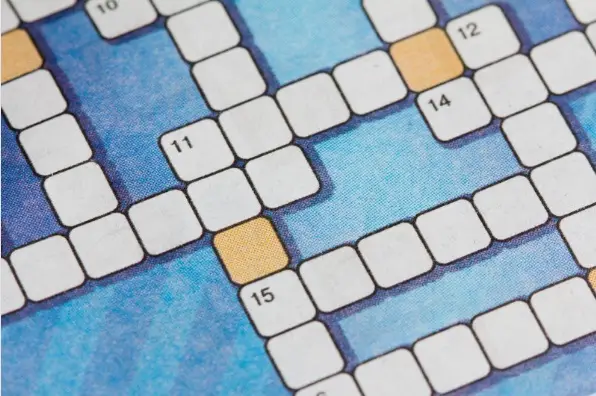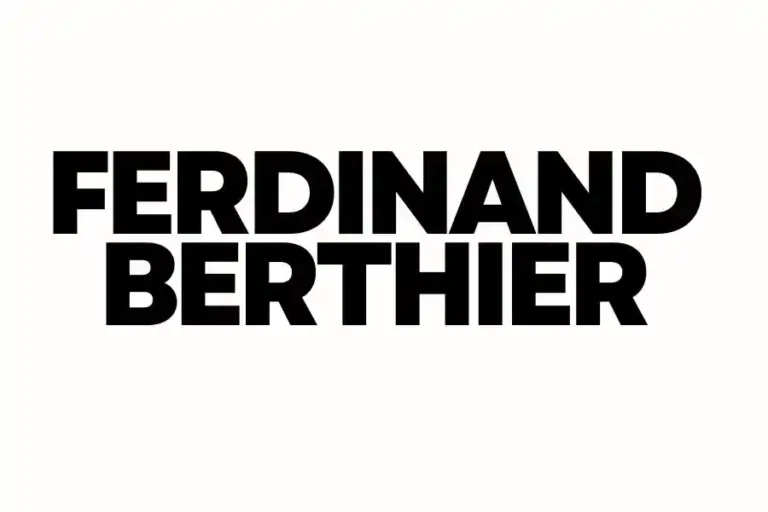Goads on Nyt: Decoding the Multifaceted Clue in Crossword Puzzles

The New York Times crossword puzzle is known for its tricky clues and diverse topics. One word that often pops up and confuses many is “goads.” In crosswords, “goads on nyt” can mean different things.
It might refer to something that encourages or pushes people to act, like giving a little push to help someone do something. It can also mean sharp sticks used to guide animals. By learning what “goads” means in these puzzles, you can better solve them and have more fun.
What “Goads on Nyt” Means in Crosswords
In crossword puzzles, “goads” usually refers to something that provokes or encourages someone to act. The word has multiple meanings, making it a versatile clue or answer. Here’s how “goads” might be used:
As a Verb
When “goads” is a verb, it means to provoke or encourage someone to do something. This usually happens through challenge or criticism. For example, imagine someone pushing you to try out for a sports team by pointing out how good you could be. That’s a bit like how “goads” works. It’s like giving someone a little push to get them to take action.
So if someone says, “She goads him to study harder,” it means she’s encouraging or challenging him to put in more effort. It’s about making someone do something by urging them or even making them uncomfortable until they do what’s needed.
As a Noun
As a noun, “goads” refers to sharp sticks used to drive animals like cattle. Imagine farmers using long, pointed sticks to guide cows where they want them to go. That’s what a goad is. It’s an old tool to ensure animals move in the right direction, especially in farming.
So, if you encounter the word “goads” in a crossword puzzle that refers to a tool, consider agriculture and animals. It’s all about helping to control or guide animals with a pointed stick.
Metaphorical Usage
In a metaphorical sense, the word “goads” can be used in a not literal way. The New York Times crossword puzzles often use words in creative ways. So, if “goads” is used metaphorically, it might not be about actual sticks or pushing someone physically. Instead, it could mean something that encourages or motivates someone to act.
For example, a challenging question or a motivating statement could be seen as a goad if it pushes someone to think or do something they might not have done otherwise. It’s about encouragement or stimulation, even if it’s not a physical object or direct challenge.
Historical Context and Evolution
“Goads” originally referred to a farming tool used to drive livestock. Over time, its meaning expanded to include urging or inciting action. In the crossword, this evolution reflects changes in language and culture.
Early puzzles used the literal farming definition more often. As language evolved, the metaphorical usage became more common. This change mirrors the New York Times readership shift and the move away from agricultural lifestyles in many parts of the United States. Nowadays, solvers are more likely to encounter “goads” in their figurative sense.
Strategies for Solving “Goads” Clues
When you come across a clue that might lead to “goads,” try these strategies:
Context Clues
When you’re solving a crossword puzzle, look around the clue for hints about what the answer might be. For example, if the clue talks about farming or animals, it might hint at something related to those topics.
In this case, “goads” could mean urging animals or motivating people. Think about what kind of theme the clue suggests to help figure out what “goads” means in that context.
Word Length
Counting the number of letters in the word you need for the crossword can help you find the correct answer. “Goads” is a five-letter word. Knowing this can help you decide if “goads” fits the answer, especially if you have other letters from different clues that match.
Tense and Part of Spec
It’s essential to know if the clue asks for a verb or a noun. A verb is an action word, like “run” or “jump,” while a noun is a person, place, or thing, like “dog” or “car.” If the clue is about urging someone on, like “Urges on,” it’s probably looking for a verb. If it’s about something like “Cattle prods,” it’s likely asking for a noun.
Crossword Conventions
Crossword puzzles have special rules. For instance, if a clue ends with a question mark, it might use wordplay or a pun. This means the clue might need to be more straightforward and could be hinting at something more creative or less literal. Understanding these conventions can help you figure out tricky clues.
Consider Synonyms
If you’re having trouble with a clue, think of words with similar meanings to “goads.” Words like “prods,” “urges,” or “spurs” are all similar to “goads.” Trying different synonyms can help you connect the correct answer to the clue.
Historical and Cultural Knowledge
Knowing history or culture can help solve clues. For example, knowing about old farming practices or motivational ideas can give you clues about what “goads” might mean. This background knowledge can make understanding and solving clues that reference these topics easier.
The Art of Clue Creation
The New York Times crossword constructors are known for their creativity in crafting clues. When it comes to “goads,” they might use various techniques to challenge and engage solvers:
Wordplay
Wordplay is all about having fun with words and their meanings. Regarding puzzles or clues, wordplay means using puns or clever tricks to make you think. For example, if you see a clue like “Cattle call?” it might be playing around with the idea of “goads,” which are tools used to move cattle.
Instead of asking about goads, the clue uses a funny twist related to how these tools are used. This makes solving the puzzle more exciting because you must consider how words can be used. So, when solving clues, keep an eye out for wordplay – it’s all about the clever ways words can hint at the answer!
Misdirection
Misdirection in puzzles is like a sneaky trick that makes you think differently. Puzzle makers use tricky language to lead you away from the correct answer. For instance, seeing a clue like “Pointed remarks?” might make you think of sharp objects or spicy comments.
But actually, it could be hinting at something completely different, like the sharp points on a “goad.” Misdirection makes solving puzzles a bit like a game of hide and seek with words, where you have to be clever to figure out what the real clue is pointing to.
Cultural References
Cultural references in clues use knowledge from history, pop culture, or traditions to give hints. For example, if a clue says “Spartan motivators,” it’s referring to the harsh training methods used by the ancient Spartans, who were known for their strict discipline.
This clue hints at “goads,” tools used to push or motivate. So, when you see clues that mention historical or cultural things, they might use that background to help you figure out the answer. It’s like a mini history lesson wrapped up in a puzzle!
Multiple Meanings
Sometimes, clues play with words that have more than one meaning. The clues might use this double meaning for “goads,” which can be both a physical tool and a way to describe something that motivates or pushes you.
For example, a clue might hint at something that can poke or encourage in different ways. Understanding that words can have different meanings helps you solve clues better because you can think about all the possible answers. It’s like a puzzle within a puzzle, where you have to figure out both the literal and figurative meanings of the words.
Rhymes and Alliteration
Rhymes and alliteration make clues more fun and challenging. Rhyming clues use words similar to hint at the answer, while alliteration uses repeated consonant sounds at the beginning of words. For example, a clue might use rhymes like “goad” and “toad” or alliteration like “goading goads” to make the puzzle more interesting.
These techniques add a playful element to solving clues because you have to listen carefully to the sounds and patterns in the words. It’s like a musical way of giving hints, making solving the puzzle more enjoyable!
The Role of “Goads on Nyt” in Puzzle Themes
Besides appearing as individual clues or answers, “goads” can play a role in broader puzzle themes. Themed puzzles might incorporate multiple references to motivation, farming, or prodding throughout the grid. Recognizing these themes can provide valuable context for solving related clues.
Possible themes involving “goads” could include:
Agricultural Focus
Imagine a game where you solve puzzles about farming. You’ll find words and clues related to growing crops, raising animals, and all things happening on a farm. Think of it like learning about farmers’ tools and methods, from planting seeds to harvesting fruits and vegetables.
You’ll have to find the correct answers about different farming jobs and tools, like tractors and ploughs, and what they do. This theme helps you understand how important farming is and how it helps us get the food we eat daily.
Motivation and Achievement
In this puzzle game, you’ll find clues about what makes people feel excited and work hard to reach their goals. It’s all about finding ways to stay positive and keep trying, even when things are tough. The puzzles might ask questions about famous people who achieved great things or ways to encourage yourself and others.
For example, you might learn about famous inventors, athletes, or leaders who didn’t give up and achieved their dreams. This theme is about understanding how motivation helps us overcome obstacles and succeed.
Animal Behavior
This puzzle focuses on how humans and animals interact. You’ll solve clues about how we train pets, care for farm animals, and understand animal needs. You might come across questions about how to train a dog, why animals behave in specific ways, or how to keep farm animals healthy. The puzzles could also explore how animals help us, like working dogs or horses. Learning about animal behaviour helps us know how to care for our pets and work with animals well.
Historical Practices
This puzzle takes you back in time to explore how people used to care for animals and farm long ago. You’ll find clues about old farming tools, traditional animal-raising methods, and old-fashioned crop-growing methods.
For instance, you might learn how the people pled fields with animals before tractors were invented or how they used to milk cows by hand. This theme helps you understand how farming and animal care have changed and why some old methods are still important today.
Linguistic Evolution
In this puzzle, you’ll trace how words have changed over time. You’ll see how simple words have grown to mean more complex things. For example, “goads” might start with a simple meaning but expand to more abstract ideas.
This game helps you understand how languages evolve and how words get new meanings as people use them differently. A word that once described something particular can represent broader concepts or ideas.
The Psychological Impact of “Goads” in Puzzles
Using words like “goads” in crossword puzzles serves multiple purposes beyond vocabulary exercises. From a psychological perspective, encountering such terms can:
Stimulate Critical Thinking
To solve puzzles and clues effectively, solvers need to think creatively and make connections between different ideas. This means focusing on the obvious and considering how various elements might fit together in unexpected ways when you put together a puzzle where each piece needs to be examined from different angles.
For example, if a clue mentions “goads,” you might need to consider what goads are and how they might relate to other situations or ideas. Engaging in this kind of lateral thinking challenges your brain to find unique solutions and understand things from different perspectives. This exercise in creativity can help you become a better problem solver, not just in puzzles but in everyday life.
Enhance Vocabulary
Learning new words and seeing them used in different situations helps build your vocabulary. When you encounter a word like “goads” in various contexts, you can see how it’s used differently and understand its meaning.
For instance, “goad” can refer to a tool used to drive animals or a way to provoke someone. By learning these different uses, you can improve your language skills and use words more accurately.
Discovering and learning new words improves your reading, writing, and speaking skills. It’s like adding new tools to your language toolbox, which can help you express yourself more clearly and understand others better.
Provide Cognitive Exercise
Solving puzzles and clues requires your brain to work hard, which is excellent for keeping your mind sharp. When you tackle a clue related to “goads on nyt,” you’re engaging in a mental workout that helps strengthen your cognitive abilities.
Just like exercising your body keeps you fit, doing these mental exercises keeps your brain active and flexible. It’s about practising how to think quickly and solve problems in creative ways. These challenges can improve problem-solving skills, memory, and overall brain health. Regularly working on such puzzles keeps your mind engaged and prepared for new and different tasks, which is beneficial for your cognitive development.
Foster Cultural Awareness
When clues reference historical or cultural aspects, like “goads,” they help you learn about different cultures and their practices. Understanding these references can give you a broader view of how people lived in the past or how other cultures have influenced language and practices.
For example, knowing what a goad is and how it was used historically can give you insights into past societies’ daily lives and tools. This kind of learning can make you more aware of the rich history and diverse practices that shape our world today. By exploring these cultural references, you gain a greater appreciation for different traditions and the evolution of language and customs.
Offer Satisfaction
There’s a special feeling you get when you solve a tricky clue about “goads on nyt” successfully. It’s like hitting a home run or finishing a challenging game level. This sense of accomplishment can be very motivating and make you want to keep solving more puzzles.
When you figure out a problematic clue, it shows that you have the skills and persistence to tackle complex problems. This feeling of success boosts your confidence and encourages you to take on new challenges. Each solved puzzle adds to your experience and makes you better at problem-solving, which is both satisfying and exciting.
The Future of “Goads” in Crosswords
As language and culture evolve, so will the treatment of words like “goads” in The New York Times crossword. We can anticipate:
Increased Abstraction
In future puzzles, clues might use “goads” more abstractly or metaphorically than just thinking about physical goads like sticks used to prod animals; the clues might use the word to describe something that motivates or pushes people to act in a more figurative sense.
For example, a clue might describe a goad as encouraging someone to achieve their goals or go through a challenge. As language evolves, crossword creators might explore these deeper or more symbolic meanings of the word “goads,” making puzzles more complex and thought-provoking.
Technological References
As people who solve crosswords become more familiar with technology, clues involving “goads” might start referring to digital tools or tech-related motivators. Instead of thinking about traditional farming tools, the word “goads on nyt” might describe digital reminders, alerts, or other technological prompts that push people to act.
For instance, a clue might hint at a smartphone notification or an app feature that encourages users to complete tasks or stay on track, reflecting how technology influences our daily lives.
Environmental Themes
With increasing focus on environmental issues and animal welfare, crossword clues for “goads” might start incorporating these themes. For example, clues could link “goads” to sustainable farming practices or ethical treatment of animals, reflecting a growing awareness of these important topics.
A clue might describe a goad in the context of encouraging better environmental practices or supporting animal-friendly initiatives. This approach would help integrate global discussions into crossword puzzles, making them more relevant and engaging.
Multilingual Approaches
As The New York Times and other puzzle creators reach a wider audience worldwide, clues for “goads” might start incorporating different languages. This could involve translating “goads” or referring to similar words in other languages.
For example, a clue might provide a hint in one language and expect solvers to recognize the word “goads” in another. This approach would add an international flavour to puzzles and cater to a diverse audience, making crosswords more inclusive and educational.
Interactive Elements
In digital versions of crosswords, “goads on nyt” might be used in interactive or multimedia clues. Instead of just text-based hints, digital puzzles could include images, sounds, or animations related to “goads” that engage solvers more dynamically.
For instance, a clue might involve a short video or interactive graphic that illustrates the concept of a goad in a modern or creative context. This approach would make solving crosswords a more immersive and enjoyable experience, leveraging technology to enhance puzzle-solving.
Mastering “Goads” and Beyond
For crossword enthusiasts looking to improve their skills in handling clues related to “goads” and similar challenging words, consider these tips:
Expand Your Reading
Reading various books and articles can help you learn new words and understand different cultures. By exploring classic stories and modern writings, you can grow your vocabulary and better understand the world around you.
This variety will make you a better reader and help you solvesolve crossword puzzles by giving you more knowledge and context from which to draw. So, pick up a range of old and new books and keep your reading exciting and diverse.
Study Etymology
Etymology is the study of where words come from and how they have changed over time. By learning about the history of words, you can get clues about their meanings and use this knowledge to solve crossword puzzles.
For example, understanding that a word might have roots in another language can help you figure out tricky clues. Knowing why a word is used in a certain way makes it easier to remember and use.
Practice Regularly
The more you practice solving crosswords, the better you’ll get at it. Just like with any skill, solving puzzles takes regular effort. By doing The New York Times crossword and other challenging puzzles often, you’ll notice patterns and tricks that will help you solve them faster. Don’t get discouraged if it’s tough at first—keep practising, and you’ll see improvement over time.
Analyze Solved Puzzles
After you finish a crossword puzzle, take some time to look back at the clues you found hard, including ones related to “goads.” This will help you understand how the puzzle creator thought and how they designed the clues. Reviewing these tricky parts lets you learn new strategies and improve your skills for future puzzles. Understanding why a clue was difficult will make you better at solving similar ones next time.
Engage with the Crossword Community
Joining a crossword community, whether online or in person, can be a great way to learn and share ideas. Talking with other puzzle lovers lets you discover new tips, get advice, and discuss different solutions. Being part of a community can make solving crosswords more fun and help you improve. So, find a group or forum to connect with others who share your interest in puzzles.
Create Your Clues
Try making your crossword clues to understand how they work better. By crafting clues for words like “goads,” you can see what makes a good clue and what might make it challenging. This exercise helps you think like a puzzle creator and improves your skills in solving clues. It’s a fun way to learn more about the puzzle-making process and better solve puzzles yourself.
Conclusion
The appearance of “goads” in The New York Times crossword exemplifies the puzzle’s ability to challenge, educate, and entertain. By understanding the multiple facets of this word – from its literal, agricultural roots to its metaphorical applications – solvers can approach related clues with greater confidence and appreciation for the craft of crossword construction.
As we’ve explored, “goads on nyt” is more than just a five-letter answer; it’s a window into linguistic evolution, cultural practices, and the art of wordplay. Whether you’re a seasoned solver or a crossword novice, encountering “goads” in your next puzzle can be an opportunity for growth, reflection, and intellectual stimulation.
Remember, the joy of crossword-solving lies in completing the grid and the journey of discovery and learning. So the next time you encounter a clue that might lead to “goads,” embrace the challenge and the opportunity to expand your crossword-solving repertoire. You can also know about BuffStream by going through that link.
FAQs
How often does “goads” appear in The New York Times crossword?
While exact frequency can vary, “goads” is a common word in crosswords due to its versatile meaning and beneficial letter combination. It may appear several times a year in various forms.
Are there any specific days of the week when “goads on nyt” is more likely to appear?
“Goads” can appear any day, but it’s more likely in mid-week puzzles (Wednesday-Friday) due to its moderate difficulty level and potential for clever cluing.
How can I improve my ability to solve clues related to “goads”?
Practice regularly, study word origins, expand your vocabulary through diverse reading, and analyze solved puzzles to understand cluing techniques.
Are there any common variations of “goads” that appear in crosswords?
Variations might include different tenses or forms, such as “goad,” “goading,” or “goaded.” Constructors might also use synonyms or concepts like “prod” or “spur.”
What other words or concepts are similar to “goads on nyt” in crossword puzzles?
Words with multiple meanings or metaphorical applications, such as “spur,” “prod,” “urge,” and “drive,” often serve similar roles in crosswords.
How can I get better at recognizing metaphorical uses of words in crosswords?
Familiarize yourself with common metaphorical phrases and idioms, and practice lateral thinking to see beyond the literal meanings of clues. Engaging with literature and media that use rich, figurative language can also help.





